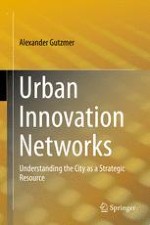2016 | OriginalPaper | Buchkapitel
6. Audi, Siemens, Ikea, Haus der Kunst, Igreja Universal: Five Urban Strategies
verfasst von : Alexander Gutzmer
Erschienen in: Urban Innovation Networks
Aktivieren Sie unsere intelligente Suche, um passende Fachinhalte oder Patente zu finden.
Wählen Sie Textabschnitte aus um mit Künstlicher Intelligenz passenden Patente zu finden. powered by
Markieren Sie Textabschnitte, um KI-gestützt weitere passende Inhalte zu finden. powered by
